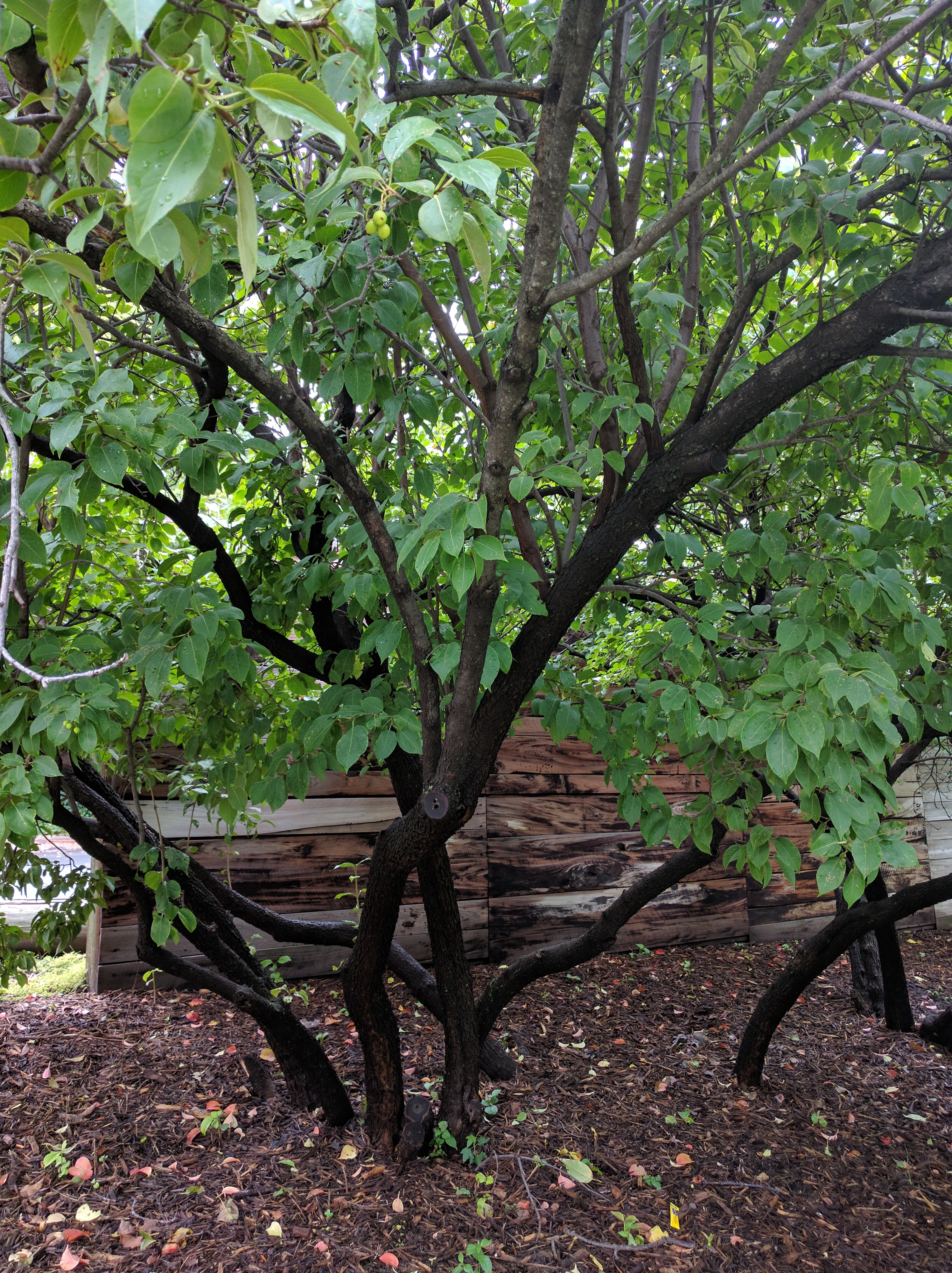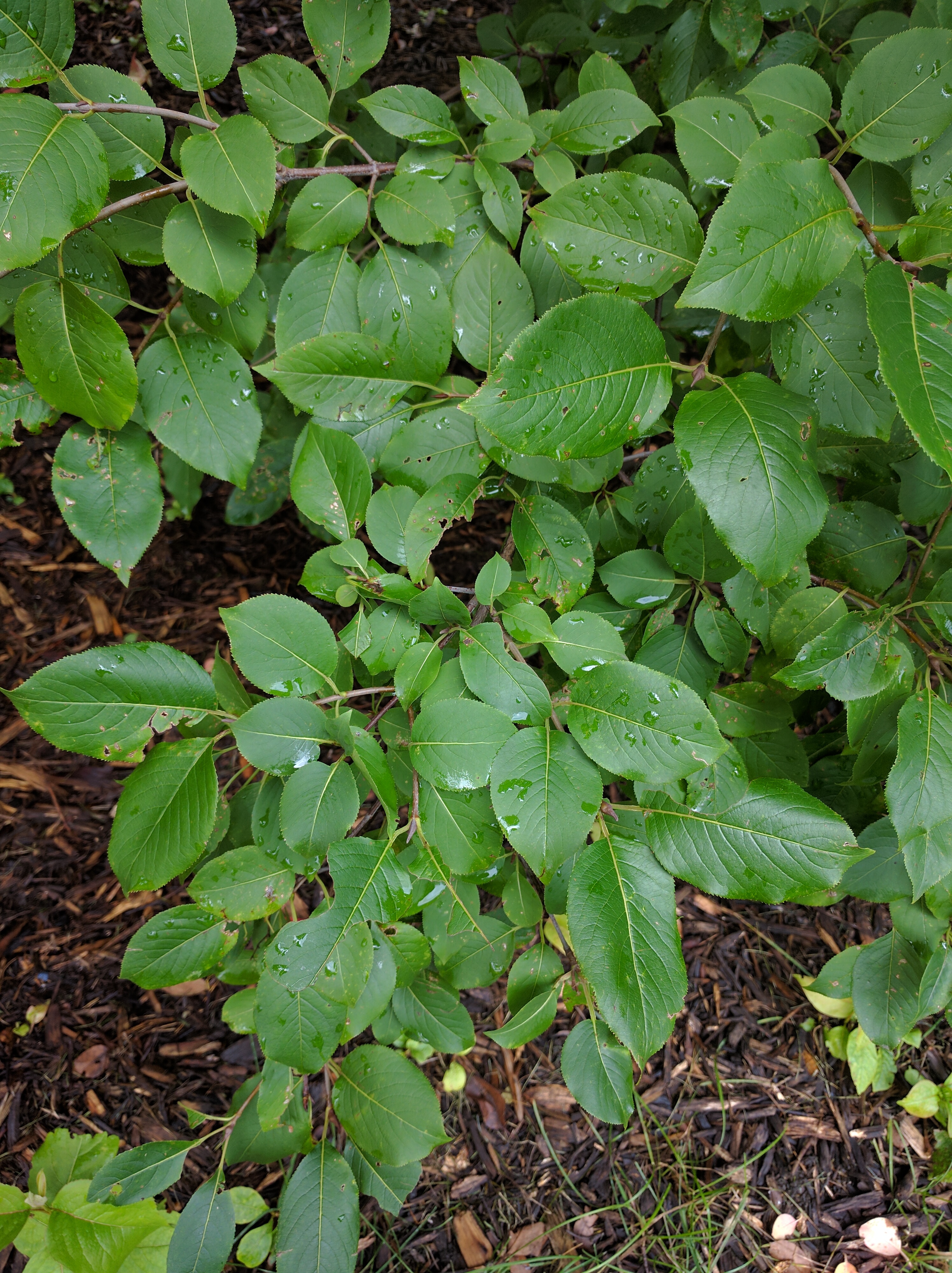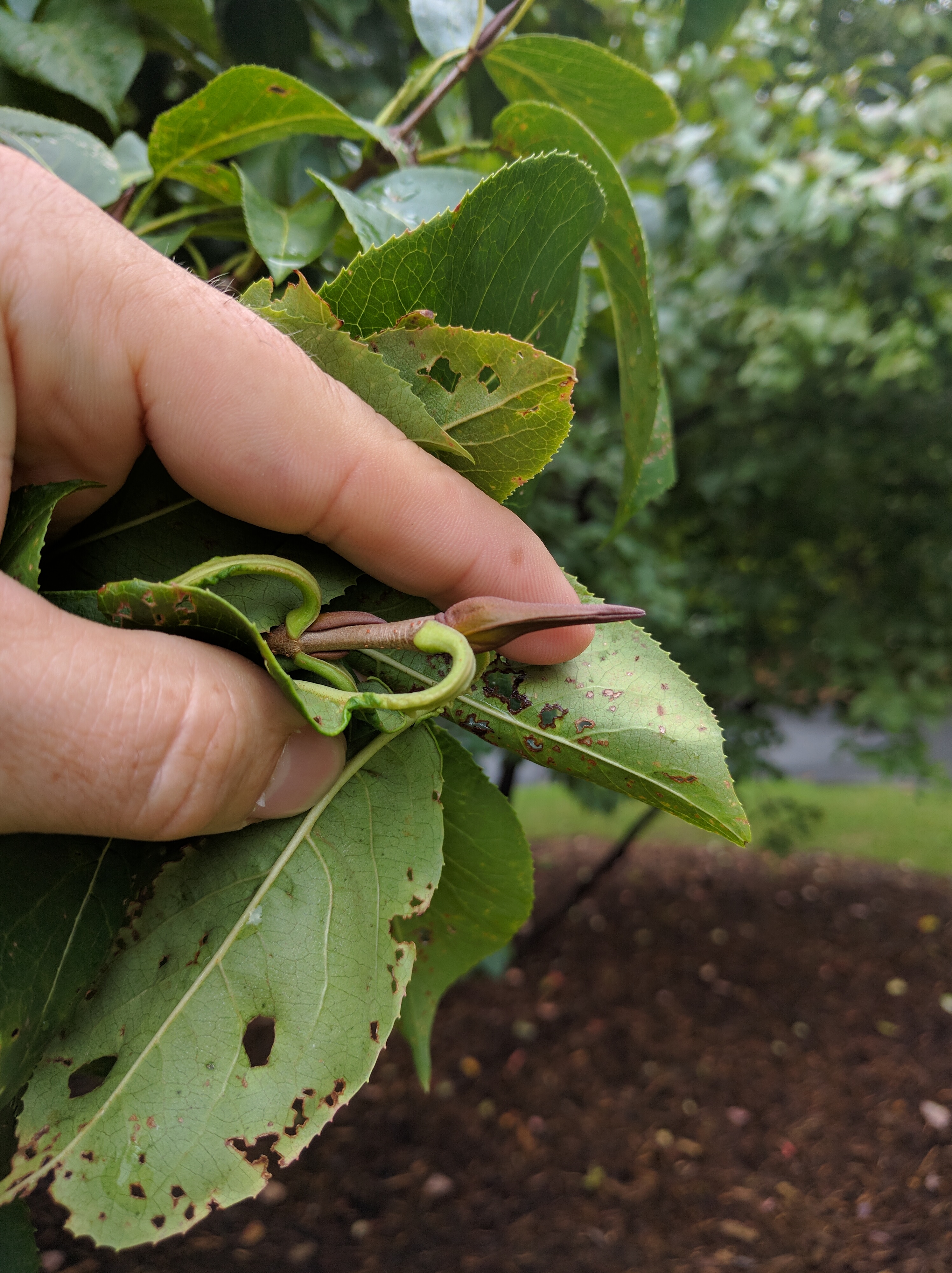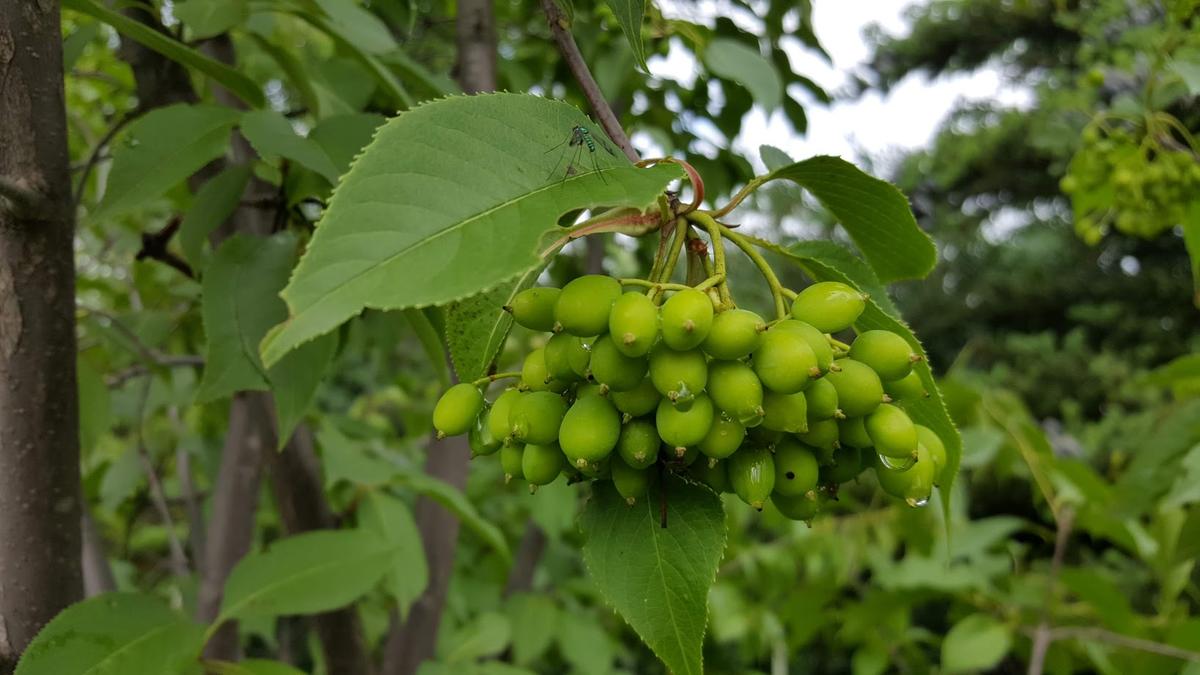Common Name: nannyberry
Scientific Name:
Family: Adoxaceae
Genus: Viburnum
Species: lentago
Hardiness Zone: 3 to 7
Height: 8 to 25 ft
Width: 10 to 15 ft
Common Characteristics:
Nannyberry can be grown as a large, multi-stemmed shrub or a small tree. The bark is a dark, brownish-black color with a blocky appearance. The leaves are in an opposite arrangement and are long oval-shaped with finely serrated edges. The top of the leaves is dark green and lighter underneath, turning reddish-purple in the fall. Nannyberry has a large terminal bud that is reddish-purple and looks similar to a goose bill. The small non-fragrant flowers are cream-colored and arranged in a flat-topped cluster. The flowers are followed by berry-like drupes that are blue-black in color and persist through the winter.
Where it Grows:
Nannyberry grows in well-drained soils and prefers full sun to part shade. It can tolerate dry sites, occasional flooding, and wet sites. It can tolerate road salt to some degree. Nannyberry is typically found growing in woodlands and wood edges.
How it's Used:
Nannyberry can be used as a specimen tree, in borders and windbreaks, and under utility wires. The berries are edible and can be used to make jams and jellies. It has a moderate growth rate prone to suckering.
Ecosystem Services:
Butterflies and other insect pollinators are attracted to the flowers. The berries are a popular food source for birds. Nannyberry is also a caterpillar and larva host to the azure butterfly.
Where it is Native to:
Nanny berry is native to eastern North America.
Problems:
Viburnum crown borer can be an issue.
References:



